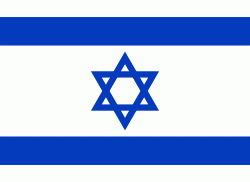Haifa Airport (Haifa International Airport)
Haifa Airport (נְמַל הַתְּעוּפָה חֵיפָה, Namal HaTe'ufa Haifa; مطار حيفا), also known as U Michaeli Airport is a small international airport located in Haifa, Israel. It is located to the east of the city, close to Kishon Port and Israel Shipyards and mainly serves civilian flights, with some military usage. Most passenger flights utilizing the airport are domestic operations to Eilat and Tel Aviv. The airport is named after Uri Michaeli, one of the pioneers of Jewish aviation and one of the founders of aviation in Israel. The airport has one short runway, 1318 m in length, and there are plans to extend it by 316 m.
Haifa Airport was established by the British Mandate in 1934 as its first international airport at the location of RAF Station Haifa which originally served the British Army and the Iraqi-British oil company, APS. RAF Haifa already had passenger service by Imperial Airways to Alexandria (since 1931) and Baghdad (since 1932). In 1936 passenger services by Misr Airwork to Beirut and Cyprus were opened. In 1937, these were joined by Palestine Airways services, as well as Ala Littoria regular services to Brindisi and Trieste via Athens. In 1938 a third of flights into Mandatory Palestine landed in Haifa; but in 1940, civil flights were stopped due to the Second World War in which the airport served the Royal Air Force's operations in the Middle East as RAF Haifa. The RAF station closed in 1948, and the airport re-opened as Haifa Airport.
Haifa Airport was established by the British Mandate in 1934 as its first international airport at the location of RAF Station Haifa which originally served the British Army and the Iraqi-British oil company, APS. RAF Haifa already had passenger service by Imperial Airways to Alexandria (since 1931) and Baghdad (since 1932). In 1936 passenger services by Misr Airwork to Beirut and Cyprus were opened. In 1937, these were joined by Palestine Airways services, as well as Ala Littoria regular services to Brindisi and Trieste via Athens. In 1938 a third of flights into Mandatory Palestine landed in Haifa; but in 1940, civil flights were stopped due to the Second World War in which the airport served the Royal Air Force's operations in the Middle East as RAF Haifa. The RAF station closed in 1948, and the airport re-opened as Haifa Airport.
| IATA Code | HFA | ICAO Code | LLHA | FAA Code | |
|---|---|---|---|---|---|
| Telephone | Fax | ||||
| Home page | Hyperlink |
Map - Haifa Airport (Haifa International Airport)
Map
Country - Israel
 |
 |
| Flag of Israel | |
The Southern Levant, of which modern Israel forms a part, is on the land corridor used by hominins to emerge from Africa and has some of the first signs of human habitation. In ancient history, it was where Canaanite and later Israelite civilizations developed, and where the kingdoms of Israel and Judah emerged, before falling, respectively, to the Neo-Assyrian Empire and Neo-Babylonian Empire. During the classical era, the region was ruled by the Achaemenid, Macedonian, Ptolemaic and Seleucid empires. The Maccabean Revolt gave rise to the Hasmonean kingdom, before the Roman Republic took control a century later. The subsequent Jewish–Roman wars resulted in widespread destruction and displacement across Judea. Under Byzantine rule, Christians replaced Jews as the majority. From the 7th century, Muslim rule was established under the Rashidun, Umayyad, Abbasid and Fatimid caliphates. In the 11th century, the First Crusade asserted European Christian rule under the Crusader states. For the next two centuries, the region saw continuous wars between the Crusaders and the Ayyubids, ending when the Crusaders lost their last territorial possessions to the Mamluk Sultanate, which ceded the territory to the Ottoman Empire at the onset of the 16th century.
Currency / Language
| ISO | Currency | Symbol | Significant figures |
|---|---|---|---|
| ILS | Israeli new shekel | ₪ | 2 |
| ISO | Language |
|---|---|
| AR | Arabic language |
| EN | English language |
| HE | Hebrew language |















